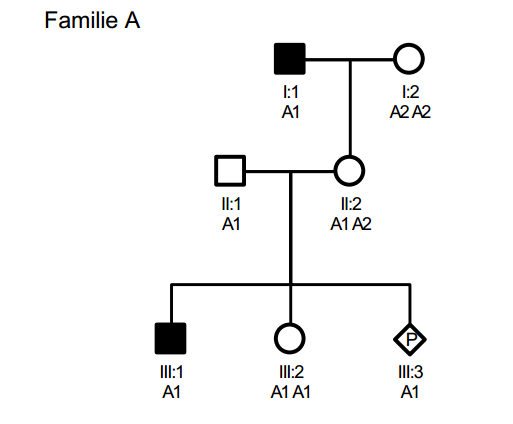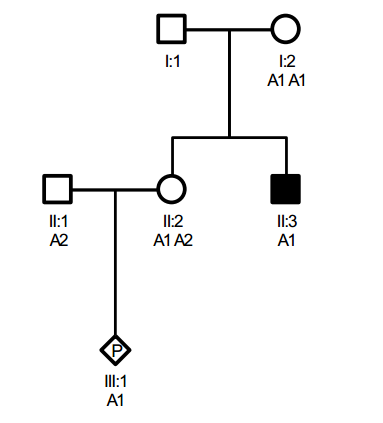Please observe the following pedigree of a family with a x-recessive disease (bleeder disease).

The A's are genetic markers so close to the disease gene that recombination is negligible.
I understand it like this: They place markers that cut the DNA at the locus of the diseased gene. If you have the disease, your gene snip will be different in size than someone who does NOT have the disease and this will be visible on a gel. So if A1 is the disease marker, how come II:1 is not affected? He only has 1 X-chromosome and has the A1 marker?
EDIT: Another problem:

Is the coming child affected? Here I don't understand how the mother A1,A1 is NOT affected when the child A1 is?! Obviously A1 is the diseased marker and the mother has two of them...So she should be sick? Unless it's spontaneous?
Am I misunderstanding something fundamentally?
